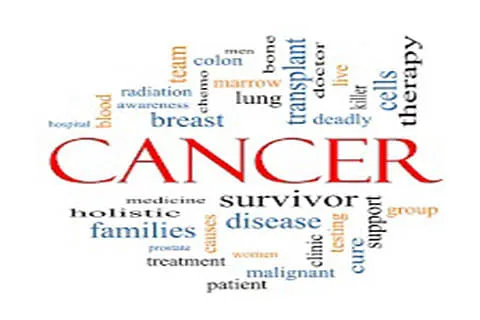Incidence of cancer in Kashmir appears higher in three southern Kashmir districts of Pulwama, Shopian and Kulgam, according to the cancer register of Sher-i-Kashmir Institute of Medical Sciences.
The three districts have accounted for 20 percent of allcancer cases in Kashmir during the last five years, with higher number ofaffected patients per lakh of population reported from there.
Official data from SKIMS reveals that between 2014 and 2018,20129 cancer cases were registered with the regional cancer center of thetertiary healthcare centre from 10 districts of Kashmir.
Of these, 3945 (19.5%) cases belonged to Pulwama, Shopianand Kulgam.
This amounts to 20 percent of all cancer patients for 18percent population of Kashmir. The population of three districts is 12.5 lakhsouls, while Kashmir, as per Census 2011, has a population of about 70 lakh.
The data shows that Pulwama district has the highestincidence of cancer, with 325 cases per lakh population.
Adjoining districts of Kulgam and Shopian also have amatching cancer rate of around 307 cases per lakh population.
However, the neighboring district of Anantnag, with apopulation of 10.7 lakh, has had 2485 cancer registrations, about 232 per lakhpopulation.
In a stark contrast to this scenario, district Kupwara, witha population of 8.7 lakh, the number of cases registered in the past five yearshas been 1349, amounting to 155 cases per lakh population.
The data came to the fore in response to an RTI applicationfiled by activist MM Shuja.
Although more number of cases are registered from largerdistricts such as Srinagar, Anantnag and Baramulla, figures relative topopulation show Shopian, Pulwama and Kulgam having higher number of cancerpatients per lakh population, compared to other districts of Kashmir.
Another official document sourced from SKIMS, with broaderdata spanning a decade between 2008 and 2018 shows that while a major chunk ofcancer patients come from the most populated capital city district of Srinagar.
Doctors say the scenario owes to better access to diagnosticfacilities and awareness.
Prof Gull Mohammad, head of medical oncology department atSKIMS said that his personal experience has also been that “quite a number” ofcancer patients hail from the three southern Kashmir districts.
He however said that the figures were based on hospital’scancer registry and an epidiomological study was needed to establish theaccurate incidence of cancer in these districts.
“Nevertheless,” he said, “We have studies that show that somecancers, such as those of brain and gastrointestinal tract take a huge toll inShopian, Kulgam and Pulwama.”
Prof Mohammad said that some studies have pointed towardspesticide use in these horticulture based districts as a contributing riskfactor.
While stressing the role of location of district and itsdistance from SKIMS as one of the factors that governed cancer detection, hesaid, “A lot of people from far flung areas are diagnosed very late and arealso unable to follow-up on treatment.”
Prof Mohammad Maqbool Lone, head department of radiationoncology at SKIMS said that the Institute was compiling data forpopulation-based cancer registry, allocated for by Indian Council of MedicalResearch last year.
“In a year, we will have the exact number of cancer patientsfrom each district,” Prof Lone said, expressing concern over the lack ofmeasures for early screening of cancer among people living in the peripheries.
“We need to intensify efforts to ensure that cancers arediagnosed earlier for a better treatment outcome.”






